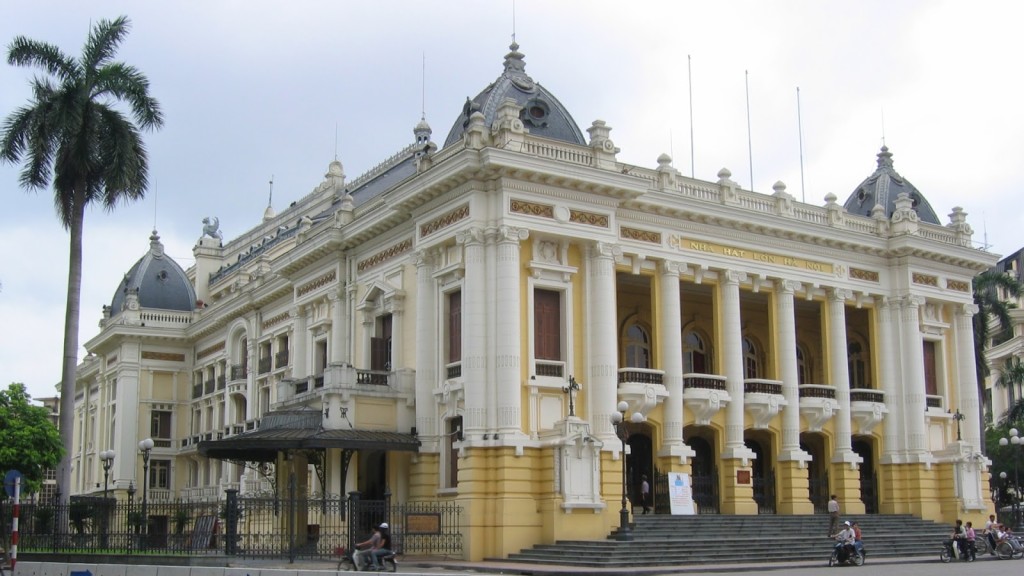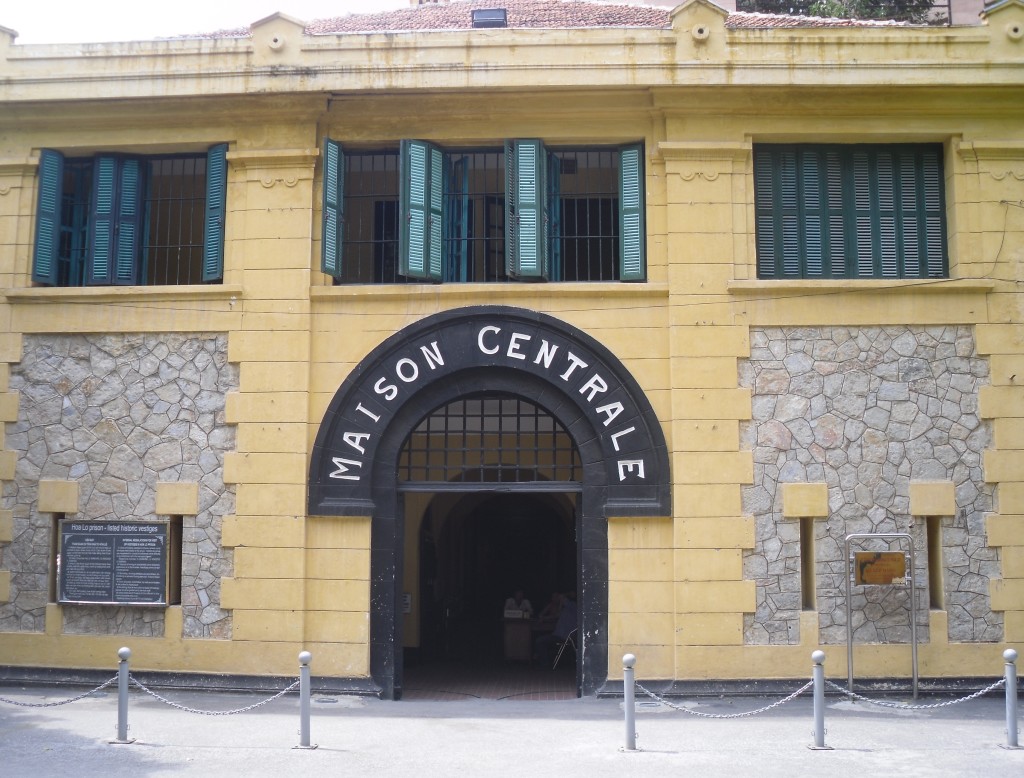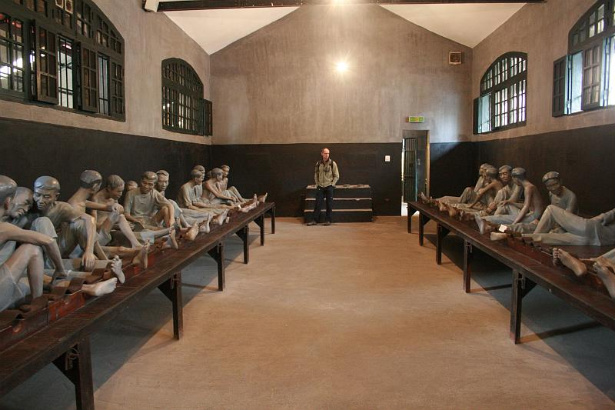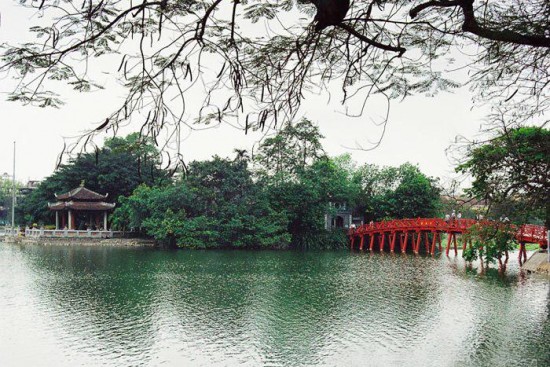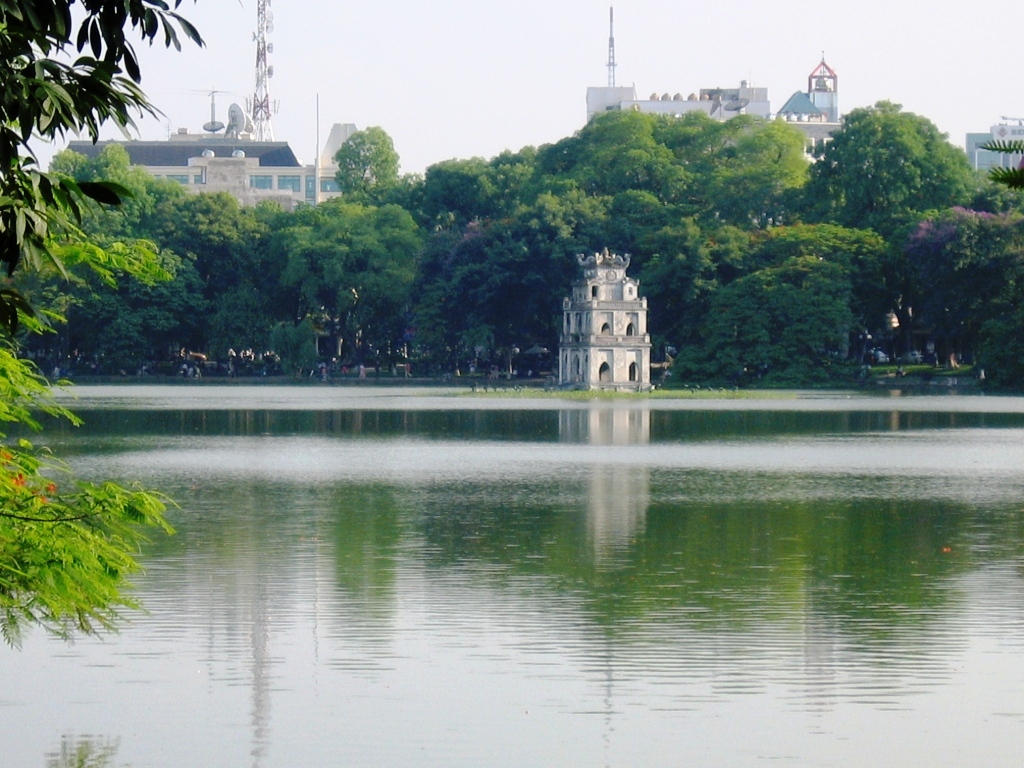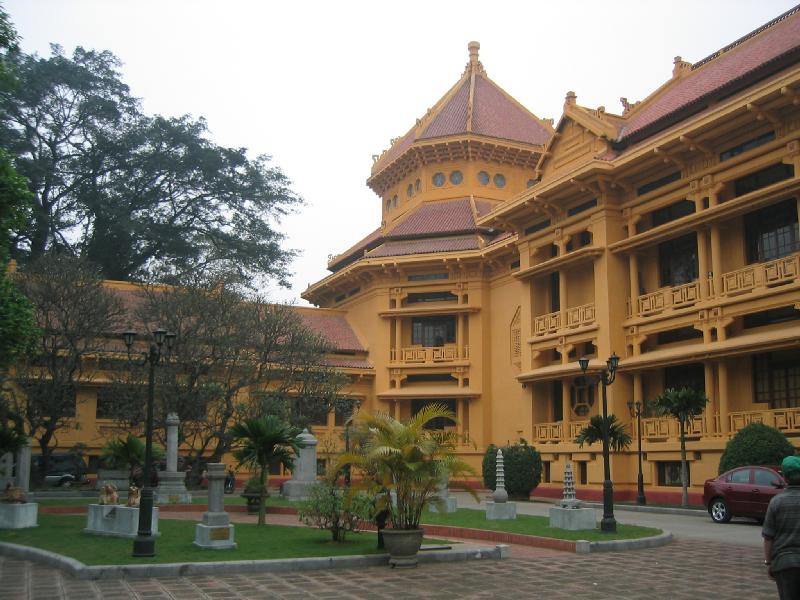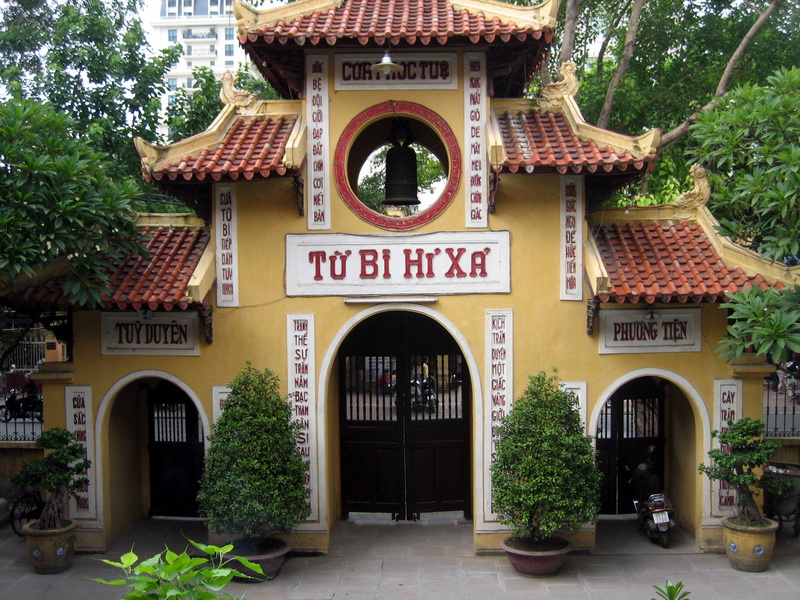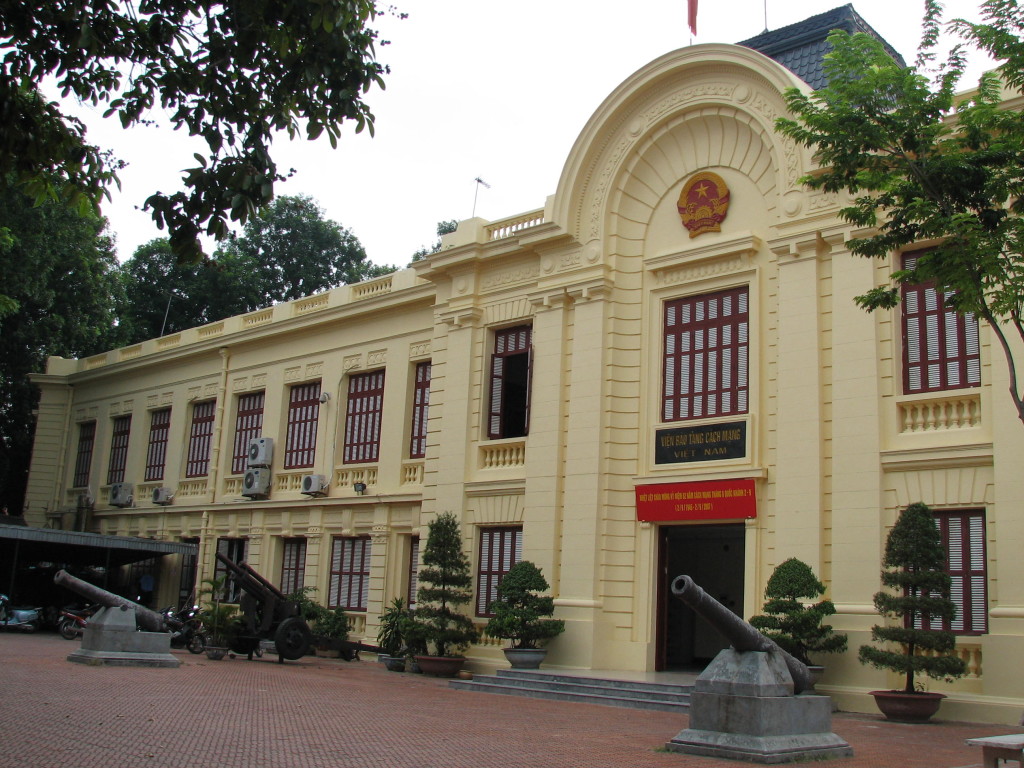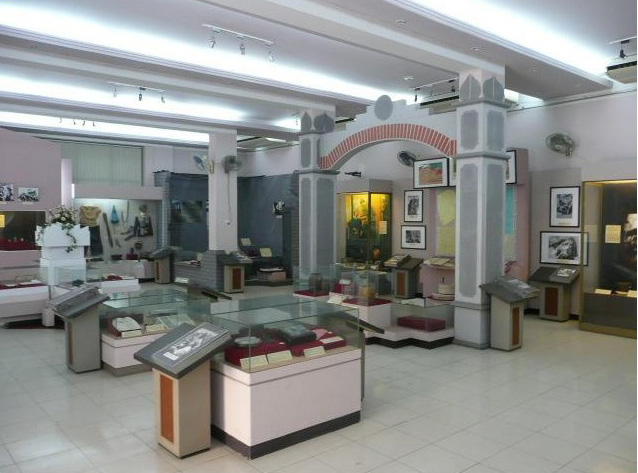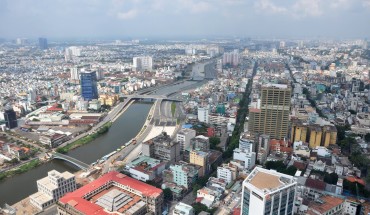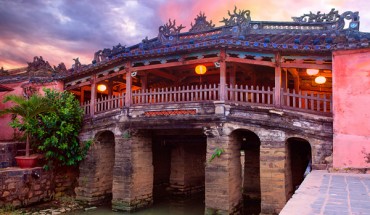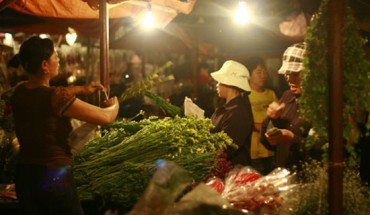Hanoi Opera House This gorgeous, historic Art Nouveau building was built near the turn of the 20th century. Unfortunately, to get inside, you’ll have to attend a performance, which are usually enjoyable but few and far between. The steps out front are a popular local hangout to sit and watch the world go by, and the fountain of the nearby Hilton Hanoi Opera, a building that fits like a jigsaw puzzle piece around the old opera, is, more than the opera building itself, a popular place for domestic tourists to get their photos snapped.
Hoa Lo Prison (Hanoi Hilton) For sheer gruesome atmosphere alone, this ranks near the top of the must-see list. It was constructed by the French in 1896 mainly In house political prisoners, and the Vietnamese took it over in 1954. It was subsequently used to house prisoners of war. From 1964 to 1973, it was a major POW detention facility U. S. Sen. John McCain was a particularly famous inmate, as was Pete Peterson, the ambassador to Vietnam, and Lt. Everett Alvarez, officially the first American pilot to be shot down over Vietnam. Their stories are told from the Vietnamese perspective in photographs and writings grouped in one small room. To the west is the guillotine room, still with its original equipment, and the female and Vietnamese political prisoners’ quarters.
The courtyard linking the two has parts of original tunnels once used by a hundred intrepid Vietnamese revolutionaries to escape in 1945. Only part of the original complex is left; the rest of the original site was razed and is ironically occupied by a tall, gleaming office complex popular with foreign investors. There are basic English explanations, but this is a good spot to have a guide, who is certain to be armed with a tale or two.
Hoan Kiem Lake Hoan Kiem Lake is the center of the city, both literally and figuratively. The lake is the city’s most popular strolling ground and a lovers’ lane at right, with couples locked in embrace on benches or parked motorbikes looking out over the placid waters, the shadows of overhanging willows cast by moonlight. In the morning, the lake area is crowded with folks out for their morning exercise running or walking in a circle around the lake or joining in with the many tai chi, martial arts, calisthenics, aerobics, and even ballroom dancing groups that meet in the open areas at warter’s edge. Hoan Kiem Lake is also the site of the city’s own creation myth: the Legend of the Lake of the Recovered Sword. In the mid-15th century, the gods gave Emperor Le Thai To a magical sword to defeat Chinese invaders. While the emperor was boating on the lake one day, a giant tortoise reared up and snatched the sword, returning it to its rightful owners and ushering peace into the kingdom. Stroll around the lake in the early morning or evening to savor local life among the willow trees and see elders playing chess or practicing tai chi. In the center of the lake is the Tortoise Pagoda; on the northern part is Ngoc Son pagoda, reachable only by the stunning Bridge of the Rising Sun, a long, red arch typical of Chinese temple compounds. Ngoc Son is a working temple, meaning that you might walk into a local ceremony of chanting monks and kneeling supplicants, The temple grounds offer great views of the surrounding lake, and the little lakeside park on the island is a popular place for elderly men to enjoy a game of Chinese chess. Don’t miss the friendly calligrapher just inside the temple (on the left as you enter). For a nominal fee, have you and your friends’ names done in Chinese characters, complete with the meanings of each symbol in English on the back (I’m “Wheat Love Machine “) or have a scroll done of significant Chinese characters such as “Heart, ” “Love, ” or “Determination” (whatever you think you might need).
Hoan Kiem is a useful locator for navigating the city; for addresses downtown, people generally give directions in relation to it. It’s good to know how to get from the lake to your hotel. The lake is also the jumping-off point for exploring the Old Quarter, Hanoi’s labyrinth of traditional craft streets in a sprawling maze on the north end of the lake (see the walking tour in the Old Quarter, p. 103). Lakeside is also a good place to find a bench and rest your toes after trundling around town, and you can find some good little cafes, particularly on the north end. Grab an ice cream and take time to stroll, or stop and watch the moon reflect off the surface of this magical lake. You might even spot one of the giant turtles that took back the sword of Le Thai To to herald peace in Vietnam, sightings of this rare breed of turtles are quite common. Willows hang over the lake and reflect in the rippling light of dusk.
Thap Rua is the small stupa that was built in 1886 by an obscure Mandarin official. The temple was at first despised and involved in a scandal in which the official tried to have his father’s bones laid to rest at the pagoda base. But over time, tiny Thap Rua, which sits on a small island at the very center of the pond, has become something of the city’s Leaning Tower of Pisa, Statue of Liberty, and Eiffel Tower all rolled into one. Just two tiers of window galleries crowned by a short tapered roof, the temple commands. great respect despite its recent construction, and it’s a popular focal point for swooning lovers at lakeside in Hanoi’s “Central Park” the lungs of the city. The turtles that can be seen basking at the temples base are said to be up to 500 years old and the very species that stole the sword and founded the fair city. Hanoians love their stupa of peace; in fact, recent initiatives to have the aging pagoda painted and restored the small stupa is covered in moss and is overgrown with weeds were met with staunch disapproval from Hanoi citizens. And so it is as it always was.
National Museum of Vietnamese History This is an exhaustive repository of Vietnamese ancient and historical relics nicely displayed with some bare-bones explanations in English. Housed in a building that was the French consulate until 1910 and a museum in various incarnations since, this collection walks you from prehistoric artifacts and carvings to funerary jars and some very fine examples of Dong Son drums from the north, excavations of Han tombs, Buddhist statuary, and everyday items of early history. It’s the kind of place where schoolchildren are forced to go (and be careful if you see buses out front), and for anyone but history buffs, you might feel just as bored as the kids. For those on any kind of historical mission in Vietnam, I recommend contacting a tour agency and booking a knowledgeable guide for an excellent overview and a good beginning to any trip.
Quan Su Pagoda Quan Su is one of the most important temples in the country Constructed in the 15th century along with a small house for visiting Buddhist ambassadors, in 1934 it became the headquarters of the Tonkin Buddhist Association, 113 and today it is headquarters for the Vietnam Central Buddhist Congregation. It’s an active pagoda and usually thronged with worshipers; the interior is dim and smoky with incense. To the rear is a school of Buddhist doctrine. For good luck (or for fun), visitors of any stripe are welcome to buy sticks of incense and make offerings at the various altars and sand urns. It’s easy to just follow suit, and folks will be glad to show you what to do.
Revolutionary Museum The revolution will not be televised; however, afterward we’ll have lots of old beat-up museums that celebrate the ongoing class struggle and inevitable triumph of a unified proletariat over the running dog bourgeoisie capitalists and their elitist, oppressive schemes to keep the common man in chains. Or so runs the old party line. What is best about the Revolutionary Museum is that It’s a little run down, a telling sign of where the nation’s revolutionary zeal has gone in the wake of a booming capitalist economy. Uncle Ho’s ideas were quickly lost in the shuffle when affordable motorbikes and TVs came on the scene. But to the elder generation of Vietnamese, the 50% who were born before 1975 and experienced Vietnam’s great struggle, places like the Revolutionary Museum are important reminders of the legacy. The revolution that started with Ho Chi Minh is celebrated now less with socialism in mind than with celebrating the nation’s hard-fought autonomy. The museum houses an interesting collection of photos and memorabilia not only chronicling the life and ascendancy of Nguyen Tat Tanh, otherwise known as Ho Chi Minh, but of the many early revolutions at the turn of the 20th century. Oil paintings retell the struggles and, literally, paint a grisly picture of life in colonial jails on Con Dao Island or Phu Quoc Island in the south. The museum route starts on the first floor with the 1945 August Revolution, photos and relics of victory at Dien Bien Phu, good background on the conflict with the United States, and the obligatory color photos of a prosperous Communist Vietnam as the revolutionaries envisioned. Party rhetoric is heavy here, and a big part of the allure of trundling around these big halls (once a French administrative building) is looking for words like “running dog” and finding artifacts like an old Budweiser can that was bent into a lantern for Viet Cong troops. Fun if you’re a war buff.
Women’s Museum This museum is closed for renovation and, at press time, was scheduled to reopen in 2009. Communism of the Ho Chi Minh variety was an egalitarian movement where all men and women were created equal, and revolutionary women were on the front lines throughout Vietnam’s long conflicts with foreign powers. Whether pushing over laden bicycles along the Ho Chi Minh Trail Network or packing a pistol through the cave complexes outside of Saigon, Vietnamese women were a little more proactive than America’s “Rosy the Riveter” of World War II fame, and Hanoi’s Women’s Museum celebrates their pivotal contribution to the war effort and to the growth of a modern, stable Vietnam. Western women visiting the museum have mixed reactions, as some find the collection and presentation a bit sexist: Women are often portrayed as victims or as unlikely sources of sanity and strength (stress “unlikely”), and emphasis is placed on women’s abilities in the cottage industry and work at home (and there are lots of dull exhibits’ to that effect), but it should be stressed that the spirit of the museum is to celebrate women’s contributions, though the sexist slant is a bit unfortunate. It’s interesting to go and deconstruct it for yourself. The entrance is a large rotunda with a great golden statue of the oversize and over muscled Soviet school of propaganda depicting a triumphant woman facing a great wind with a small child balanced on her shoulder. The first and second floors are “up the revolution” images and artifacts of women at war, winning the war, and winning the peace. Fascinating is the section of the many initiatives of women abroad (in the U. S. and Europe), suing for peace during conflict with the French and later Americans: Find long petitions to the U. S. government, flags and peace banners from the West, and photos of marches and protests (including images of Angela Davis and a contingent of overseas Vietnamese marching). The top floor features detailed displays of women’s dress, from traditional ao dai to the intricate variations among ethnic hill tribe women in the Central Highlands and the far north. A popular coffee shop is just outside the entrance to the museum, a good place to chat and connect with locals.


